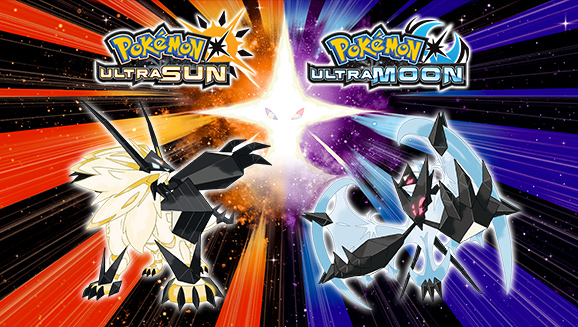Admittedly, I’ve been obsessed with Pokemon since Red, Blue, Green, and Yellow were first released way back in 1998 (North American Release). Though the first generation had about the most binary storyline that you could possibly imagine and was chocked full of bugs that weren’t resolved before release, I was instantly hooked for life. Fast forward 19 years and I sit with the same generation sequel to Pokemon Sun, Pokemon Ultra Sun. Traversing Kanto, and eventually Johto, Hoenn, Sinnoh, Unova, Kalos, and now Alola in search of every Pokemon that I could possibly capture. Ultra Sun and Ultra Moon goes all out to recapture that magic that has been present in every singe series.
The Beginning
Well, booting the game up doesn’t seem that different at all. This “sequel” like all of the rest, mimics the game that it follows. This does create a slow start for anyone who has played the original Sun or Moon but nonetheless, it’s as engaging as you would expect the regular story to be. One plus is that you’re able to import Pokemon from the original Sun or Moon when you arrive at the first Pokecenter. I was able to kickstart my game with a Moon Ball Sneasel and a Beast Ball Gible to assist the Popplio that I started with. The story seems identical to the original until you meet the Ultra Recon Squad, two aliens from another dimension who have come to your world to stop some evil in the Ultra Wormholes. This delving even further into the sci-fi realm was a welcome change of pace from the very binary power structure that every other Pokemon game (save for Black and Whit 1 & 2) leaned on as a main storyline.
In essence, this game does tend to act as more of an expansion than a full sequel as it expands on the Ultra Wormholes and also fully integrates Necrozma into the endgame.
The End
Gamefreak has one of the toughest jobs when it comes to creating Pokemon in any form or fashion. The nature of the game forces them to cater to fans that are young, old, casual, and hardcore all in one game. This is where Ultra Sun and Ultra Moon inevitably shine. Young and old fans will always be a given in the main storyline games. The casual and hardcore gamers is where balance needs to be struck. Though the story is very similar to what has been given to us before, the new Exp. Share definitely helps out. When it is turned on, casual players can power level their Pokemon and breeze through the game if they want and get to capturing Pokemon quicker. Hardcore players can turn the battle system to “set” which doesn’t allow players to switch after knocking out an opposing trainer’s Pokemon and turn off the Exp. Share for a much tougher experience.
The end game has also been polished as well. Collectors and battlers both get some satisfaction here. First, every single legendary (not mythical such as Manaphy, Mew, Celebi, etc.) Pokemon are available in the Ultra Wormholes. This will help fatten up that Pokedex and also allow battlers to bolster their team with some of the legendaries that are balanced for standard play such as Zapdos and Azelf. Another handy feature available for more hardcore players is the Mantine Surf. This allows you play a mini game that awards BP that can be exchanged for high level held items that can be used in battle.
Conclusion
Pokemon Ultra Sun started off as a slow re-hash of the game I played last year, but after giving it a chance and customizing my own play through, I did find the experience quite enjoyable. The fan service that Gamefreak added with the addition of all of the legendaries and a throwback to Giovanni with Team Rainbow Rocket and every other villain that you’ve ever face, was still a great conclusion to the handheld series. The future is uncertain for the Pokemon series. Nintendo has already announced that this would be the last Pokemon game on their handheld systems and that the next game would likely be seen late next year. While I’ll always be steadfast in my love of the storyline of the 5th generation of Pokemon, Ultra Sun and Ultra Moon continue on embodying the quirkiness of this wonderful series.
If you have a 3DS and didn’t play Pokemon Sun or Moon, this is required playing. Outside of the story, there were many technical advances as well. The old grid system which was prevalent throughout the entire series, was completely removed so you end up with your character moving fluidly throughout Alola. The complete removal of HMs means no longer carrying around a Bidoof or something similar to surf or break rocks and also not bogging down your main party with moves that are in general, subpar. Also, don’t forget about Pokepelago and Pokemon Refresh to add ample distractions from the main storyline. Possibly the most drastic change in this generation was the complete removal of Pokemon Gyms. These are the reasons why this game is necessary for any 3DS owner.
If you have played the original, the slow start my stave you off initially but casuals and hardcore players will find a very enjoyable game here. The ceiling of playtime is a bit high (about 10 hours for things to ramp up) for things to get really interesting, I feel that it is very worth it for anyone into the series or into good RPGs in general. The subtle weirdness is very entertaining and a good conclusion to this legendary series handheld run. I’m looking forward to what the future on the Nintendo Switch brings.
Photo Credit: Nintendo’s Official Website
